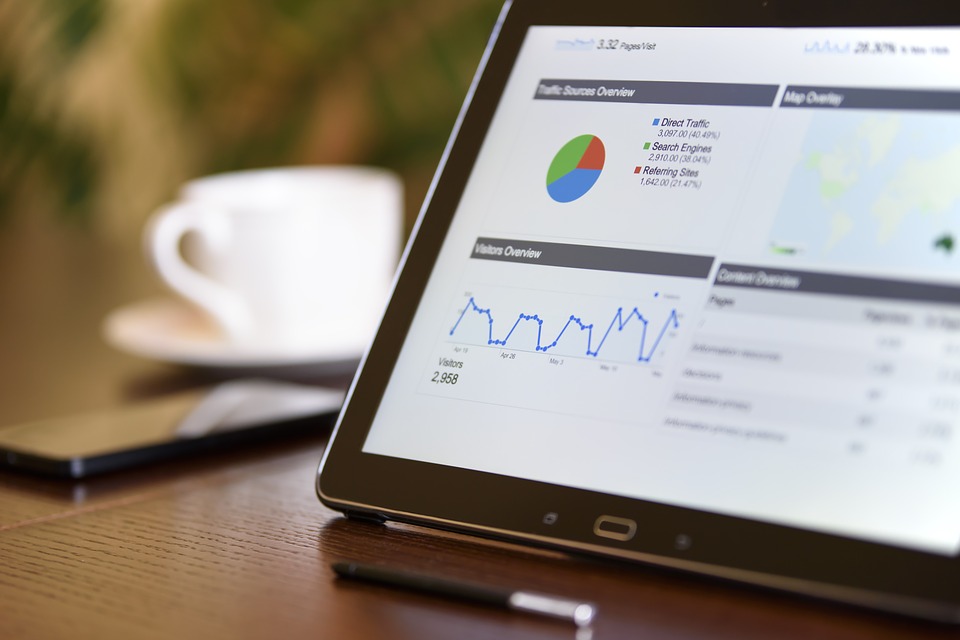

Table of Contents
Website analytics, just as the name implies, involves the measurement, analysis and breakdown of your web data so as to be able to understand the human behaviour across your web pages on the internet. Measuring your website analytics help provide insights and data.
Web analytics can be used to determine lots of factors. Factors like:
- Determining if a customer repurchase a product
- Knowing the geographic region a customer is coming from – the most and the least
- Studying the most visited and least page on the website
The goals of using web analytics revolve around lots of reasons including measuring your promotion and campaigns, form fill and lead generation, scroll depth, Video watch, etc.
Web analytics plays a very important role in defining and measuring our different KPIs, which could be lead generation, sales on the website, awareness, etc. Web analytics also include tracking the click-through rates of a customer and studying the customer behavioural action within the website.
5 Web Metrics to Measure
-
Number of Visits
The first website metrics to measure is the number of visitors coming into your site and their geographical location. Keep tabs on the traffic (study when there is an increase or decrease).
When there is a sudden increase try to know where it came from, when there’s a decrease study to know why it happened.
Always try to figure out where your visitors are coming from, is it through the ads or referrals, from social media channels, emails or even direct search by setting up your source and medium rightly.
-
Bounce Rate
According to Google “Bounce rate is the percentage rate of how long users spend staying on a particular page before leaving that page”. Driving traffic to your web pages is not enough if you don’t know how to keep visitors on your website. When visitors leave your website you need to understand why they are leaving, know how long they stayed before leaving and why they are leaving. If it’s an update you recently made then fix it. Figure out which external link is bringing in the visitors with the highest bounce rate. Be sensitive about this data as they can help you make the needed improvements and focus on bringing quality leads.
-
Time Spent on Page
How long are your visitors staying on your web page? Is it enough to get your points across to them? This is a very important metric every marketer should watch out for.
-
Click-Through Rates
Call to Actions are also an important element in your website, you need to lead your visitors to the next line of action you want them to do. When visitors don’t click on your CTAs, something needs to be done. You need to make changes so your visitors take that next step.
You can always do A/B Testing with placement, design, and size to investigate what is driving the user’s click-through. Use colour to stand out, make your CTA different from ads, but please don’t look spammy.
-
Conversion Rate
The goal of every conversion rate is to generate more revenue. Conversion rate is not limited to only purchases alone, we have different types of conversion rates – a visitor to client conversion rate, lead to customer conversion rate, email conversion rate, landing page conversion rate, etc. all this are examples of conversion rates that can be measured. Conversion rates can also be in form of a business objective. A few examples include email subscriptions, contact form submissions, content downloads, watching videos, etc.
Tools for Measuring Your Website Analytics
There are tools that can be used to get insights into your website analytics. Some of which are:
-
Google Analytics
Google Analytics is a gold standard when it comes to web analytics. This tool is simple to initiate and set up, customizable and provides all the basic information needed about your website, with Google Analytics you can get information about your audience and how visitors interact with your website.
-
Crazy Egg
Crazy Egg is an extensive yet easy to use web analytics tool. One of the best features of Crazy Egg is its ability to create heat maps and scroll maps of your website. Heat maps and scroll maps show how people are scrolling through your website and where they click through
Crazy Egg can also be used to run A/B Testing on your website and also edit web content.
-
Matomo
Formerly known as Piwik is an open-source alternative to Google Analytics. Matomo allows you to host on your own server and you own half of the data generated. This web analytics tool is highly customizable and there are also 70 plugins you can use. Matomo offers you privacy.
-
Heap
Heap is another analytics tool that is simple to use and extremely thorough. This tool captures everything that takes place on your website – every click, form submission, page view and search. Heap shows you how visitors interact on your website.
Join our list
Subscribe to our mailing list and get interesting stuff and updates to your email inbox.


